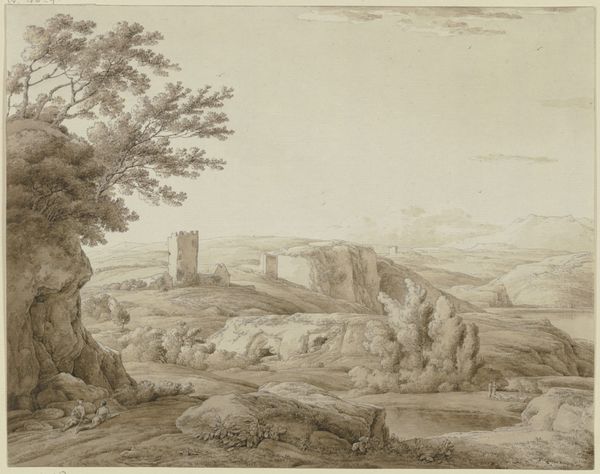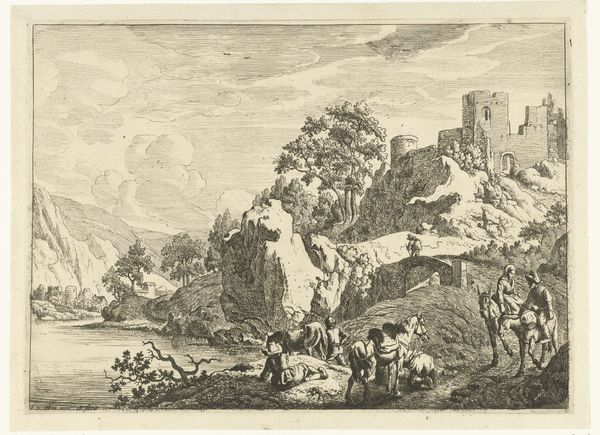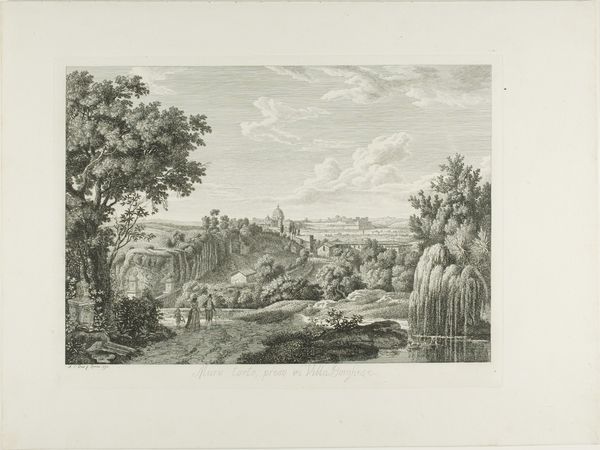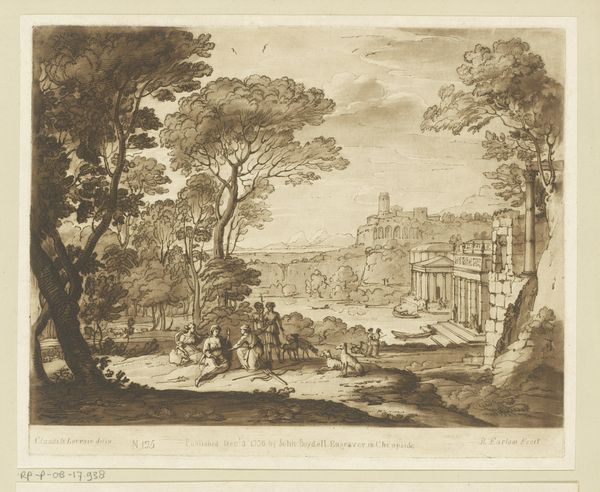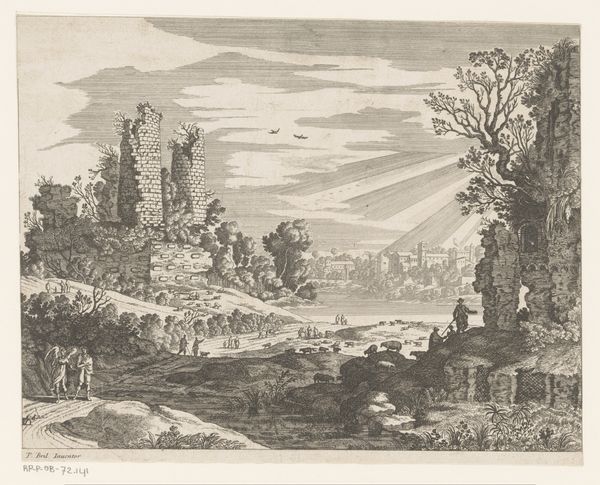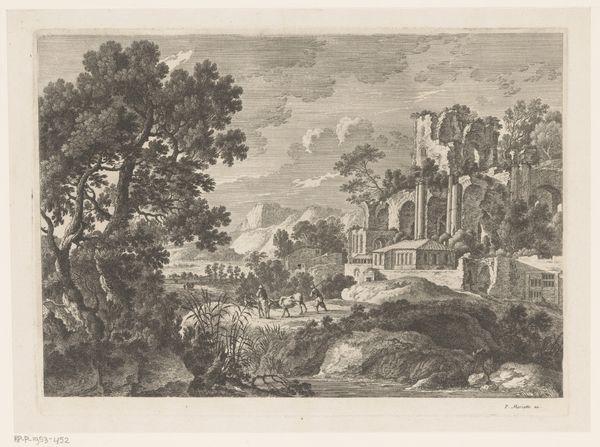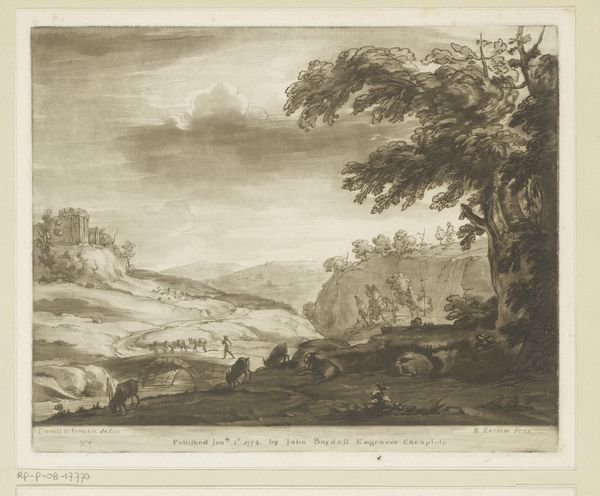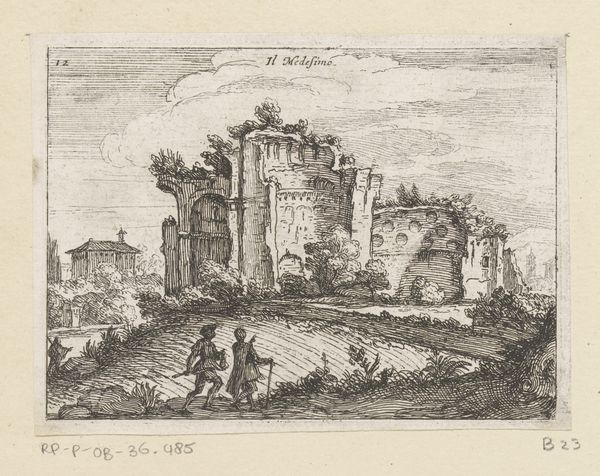
Dimensions: height 150 mm, width 101 mm
Copyright: Rijks Museum: Open Domain
Editor: So, this is "Landscape with Ruins and Shepherd with Livestock," made sometime between 1750 and 1811 by Carl Friedrich Holtzmann, using tempera, etching and engraving on a print. It feels quite pastoral, but with an unsettling edge given the crumbling structures. How do you interpret this work? Curator: The unsettling edge is precisely what intrigues me. This work exemplifies the Romantic obsession with ruins, but let's consider *how* those ruins came to be depicted, and for whom. The etching and engraving processes here – meticulously transferring an image onto a metal plate for reproduction – speak to a desire for wider consumption. These weren’t unique, precious objects, but rather commodities intended for a growing middle class eager to possess their own little piece of sublime landscape. Who produced this landscape, for whom, and under what material conditions? Editor: That’s interesting. So you are saying the *method* is relevant beyond just aesthetic effect; it connects directly to who consumed the image, and what it meant to them? Was it like early mass production for art? Curator: Precisely! Think about the labor involved – the engraver's skill, the printers churning out copies. They are not anonymous craftspeople – they shaped how these Romantic ideals were disseminated and experienced by society. It prompts questions about access, ownership, and the industrialization of image-making. What impact do you think that had on art itself? Editor: I guess it makes me reconsider Romanticism. I often think about the solitary artist, feeling deep emotion, but I haven't really considered art-making as this collective, productive process... Curator: And how that process affects the final product and its reception. Always consider the means of production! Editor: Right. It shows how an interest in landscape actually grew from a very specific, and potentially capitalist, framework of making and consumption. Thank you!
Comments
No comments
Be the first to comment and join the conversation on the ultimate creative platform.
